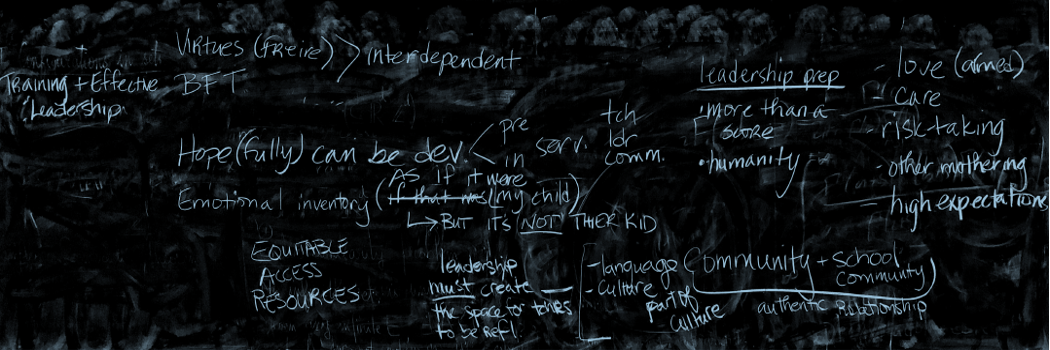I was happy that I decided to tackle this week’s readings on the Black principalship and culturally responsive/relevant leadership in chronological order, from Lomotey (1993) to Khalifa, Gooden & David (2016) because this approach allowed me to see the tremendous growth in the depth and breadth of the scholarship on this important topic. The Khalifa et al. article drew on and cited the other readings and appeared to be exhaustive in its purview (with over 200 citations in the bibliography). But, in addition to being comprehensive, its analysis was clear and practical.
Regarding clarity, the decision to frame the discussion of Culturally Responsive School Leadership (CRSL) around four strands—critical self-awareness, CRSL and teacher preparation, CRSL and school environments, and CRSL and community advocacy—helped focus the reader’s attention on the most salient issues emanating from the extensive literature. Regarding practicality, the authors paid careful attention to the behaviors entailed in effective CRSL. This strikes me as incredibly useful and reminded me that, just last week, I read that 10,000 people had signed up to participate in a Edutopia webinar on project-based learning—one that included an array of videos demonstrating this pedagogical approach in action. In a similar way, the attention paid by Khalifi et al. to CRSL behaviors helps the research-based concepts come alive and become translated into action. The effects are far-reaching. As the authors note, “we choose to describe CRSL behaviors…we highlight practices and actions, mannerisms, policies, and discourses that influence school climate, school structure, teacher efficacy, or student outcomes” (p. 1274).
As someone who is embarking on a literature review as part of my upcoming Second Exam, I also appreciated these authors’ lucid description of how they went about conducting their literature review, including the challenges they encountered, how they overcame potential obstacles, and how they avoided specific pitfalls.



